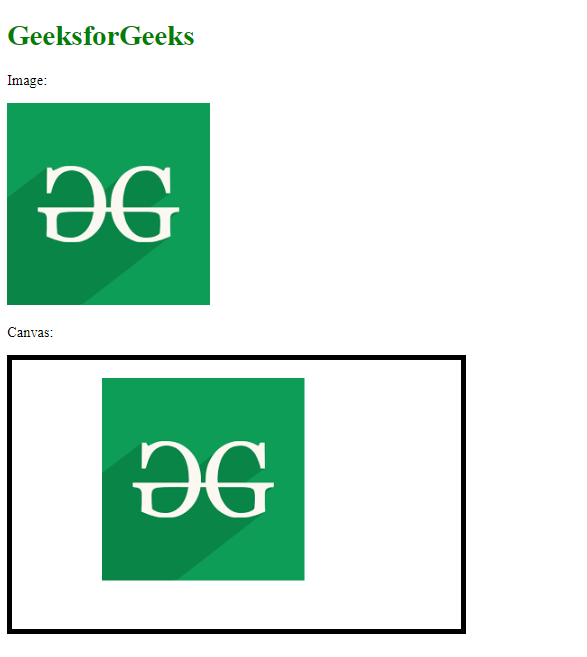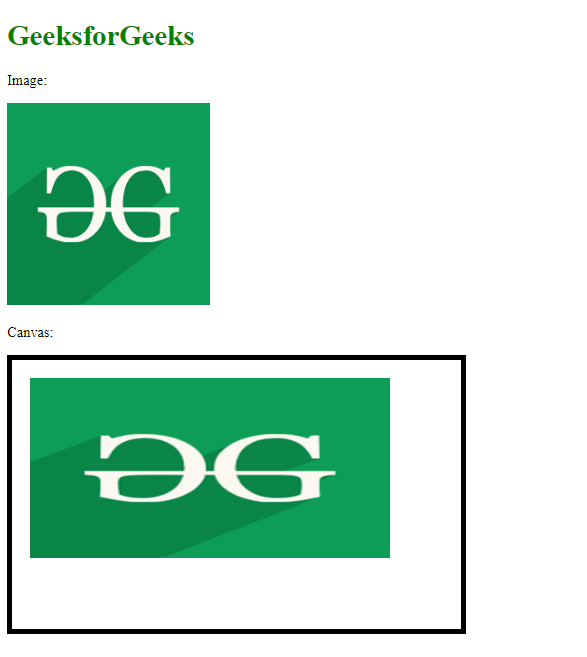如何在HTML5中使用canvas的drawImage()方法
Canvas 2D API中的canvas drawImage()方法用于在画布元素上以各种方式绘制图像。该方法包含可用于显示图像或图像的一部分的附加参数。
语法:
context.drawImage(img, x, y, swidth, sheight, sx, sy, width, height);
方法:
- 使用
<img>标签添加图像。 - 使用
<canvas>标签绘制画布。 - 加载画布并获取上下文。
- 选择要使用的图像,
- 根据需要绘制图像,可以使用其他可选参数。
示例1: 在此示例中,使用额外参数设置了图像在画布中的位置。
<h1 style="color: green;">
GeeksforGeeks
</h1>
<p>Image:</p>
<img id="gfg_image"
src=
"https://media.geeksforgeeks.org/wp-content/uploads/20200604000733/gfg199.png" />
<p>Canvas:</p>
<canvas id="myGFGCanvas" width="500" height="300"
style="border: 5px solid black">
</canvas>
<script>
window.onload = function () {
// Get the canvas element from the page
var canvas = document.getElementById("myGFGCanvas");
// Get the 2D context of the canvas
var ctx = canvas.getContext("2d");
// Get the image to be drawn on the canvas
var image = document.getElementById("gfg_image");
// Draw the image using drawImage() function
// The first parameter is the image to be drawn
// The second and third parameter is the
// x and y position of the image in the canvas
ctx.drawImage(image, 100, 20);
};
</script>
输出:

示例2: 在这个示例中,使用额外的参数设置了图像的位置和尺寸。
<h1 style="color: green;">
GeeksforGeeks
</h1>
<p>Image:</p>
<img id="gfg_image"
src=
"https://media.geeksforgeeks.org/wp-content/uploads/20200604000733/gfg199.png" />
<p>Canvas:</p>
<canvas id="myGFGCanvas" width="500"
height="300"
style="border: 5px solid black">
</canvas>
<script>
window.onload = function () {
// Get the canvas element from the page
var canvas = document.getElementById("myGFGCanvas");
// Get the 2D context of the canvas
var ctx = canvas.getContext("2d");
// Get the image to be drawn on the canvas
var image = document.getElementById("gfg_image");
// Draw the image using drawImage() function
// The first parameter is the image to be drawn
// The second and third parameter is the
// x and y position of the image in the canvas
// The fourth and fifth parameter is the
// width and height of the image to be drawn
// in the canvas
ctx.drawImage(image, 20, 20, 400, 200);
};
</script>
输出:

 极客教程
极客教程